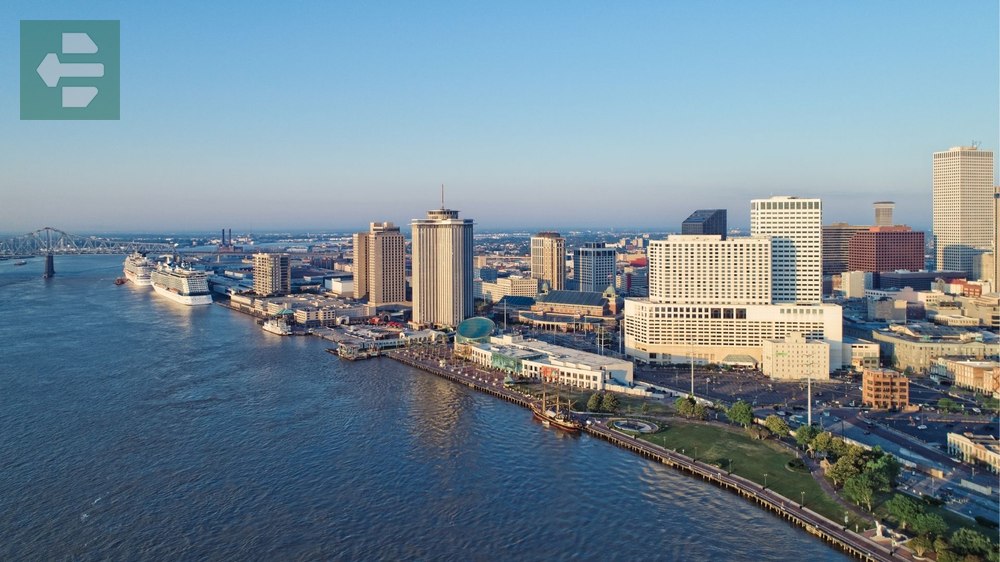New Orleans offers an intoxicating blend of culture, music, and cuisine unlike anywhere else in America. The best places to go in New Orleans include the historic French Quarter, vibrant Bourbon Street, elegant Garden District, and the soulful sounds of Frenchmen Street, each telling a different story of this magical city.
Keep reading as we explore the essential destinations that capture New Orleans' unique spirit and will make your visit truly unforgettable.
List of Contents
- 1. French Quarter: The Heart of Old New Orleans
- 2. Bourbon Street: America's Most Famous Party Street
- 3. Garden District: Antebellum Elegance Preserved
- 4. Jackson Square: The City's Living Room
- 5. St. Louis Cathedral: Spiritual Center of the Creole City
- 6. Magazine Street: Six Miles of Local Flavor
- 7. Frenchmen Street: Where Locals Go for Music
- 8. Audubon Aquarium: Underwater Journey Through America
- 9. World War II Museum: America's Untold Stories
- 10. Cafe du Monde: Coffee and Beignets Since 1862
- 11. French Market: Five Blocks of Local Life
1. French Quarter: The Heart of Old New Orleans
The French Quarter spans 78 city blocks of wrought-iron balconies and Creole architecture dating back to the 1700s. Royal Street showcases antique shops and street performers, while Chartres Street leads to hidden courtyards and historic mansions.

Walk early morning or late evening when tourist crowds thin. The Quarter reveals its authentic character in these quiet moments—locals sipping coffee on stoops and jazz musicians practicing in doorways.
Each block holds layers of history. Pirates once walked these same cobblestones, and every building has witnessed centuries of celebration and survival.
Quick Facts:
- Peak season: February-May, October-November
- Getting there: Streetcar, taxi, or walking from downtown
- Entry fee: Free to explore
- Suggested time: Full day
- Key spots: Royal Street, Chartres Street, Pirates Alley
2. Bourbon Street: America's Most Famous Party Street
Bourbon Street stretches 13 blocks of nonstop entertainment, from family-friendly daytime charm to legendary nightlife. The street transforms completely after sunset, when live music spills from every doorway and the famous “laissez les bons temps rouler” spirit takes over.
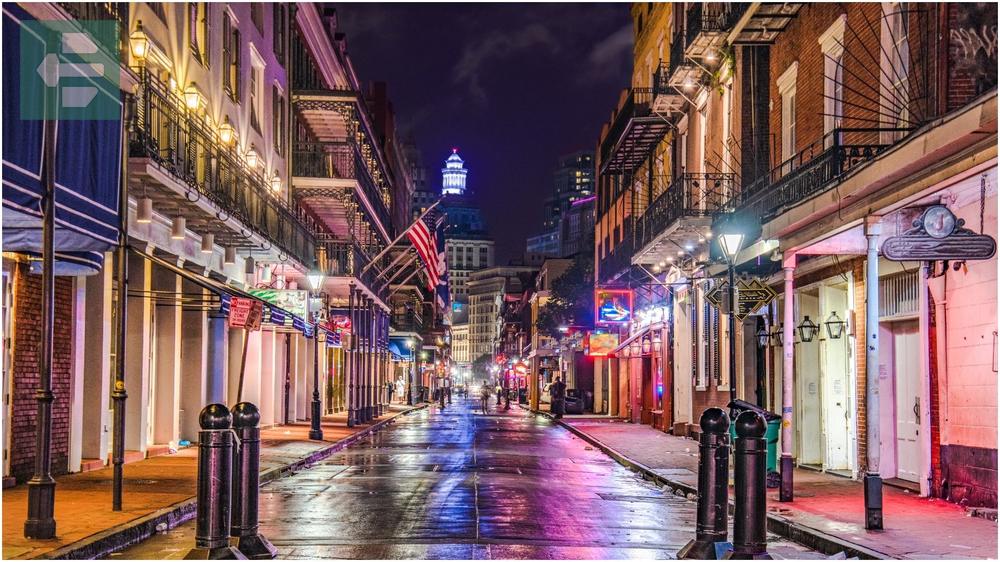
I remember standing at the corner of Bourbon and Orleans at 2 AM on a Tuesday, watching a brass band parade through like it was Mardi Gras. That's when I understood—in New Orleans, every night can be a celebration.
Skip the tourist traps near Canal Street. The real magic happens between St. Louis and Dumaine, where locals and visitors dance together on sticky floors to authentic jazz.
Quick Facts:
- Peak season: Year-round, especially weekends
- Getting there: Walk from French Quarter
- Entry fee: Free street access, bar covers vary
- Suggested time: 3-4 hours evening
- Key spots: Preservation Hall area, cross streets with Royal
3. Garden District: Antebellum Elegance Preserved
The Garden District showcases America's most spectacular collection of antebellum mansions, each more ornate than the last. Magazine Street forms the district's commercial spine, lined with boutiques and cafes housed in 19th-century buildings.
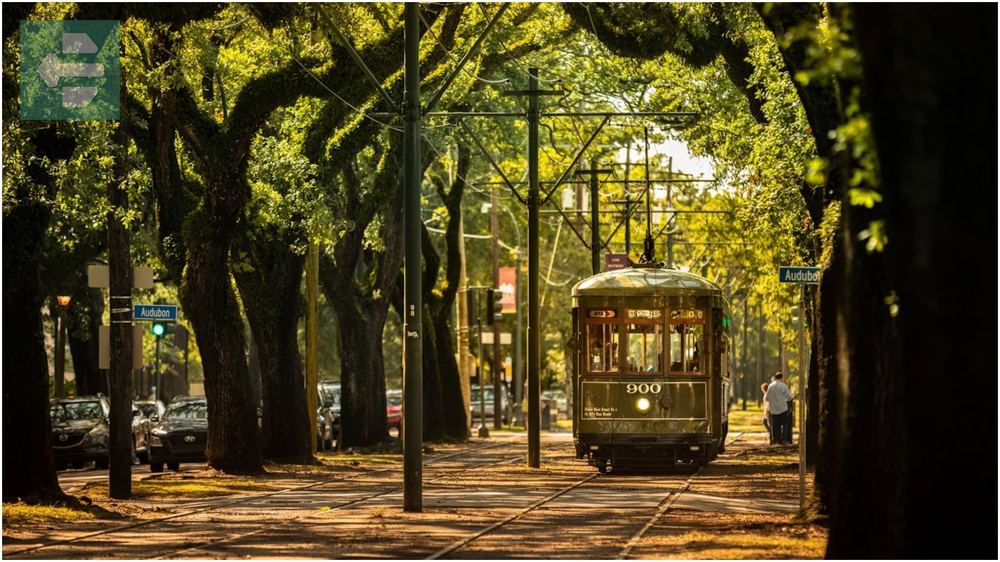
Take the St. Charles streetcar—it's been running the same route since 1835. Locals know to board at Canal Street for the best window seats during the 20-minute ride through this outdoor museum.
The mansions tell stories of cotton fortunes and architectural ambition. Walking these shaded streets feels like stepping into a Tennessee Williams play where every porch swing has witnessed generations of Southern drama.
Quick Facts:
- Peak season: October-April (cooler weather)
- Getting there: St. Charles streetcar from Canal Street
- Entry fee: Free to walk, mansion tours from $25
- Suggested time: Half day
- Key spots: Magazine Street, St. Charles Avenue mansions
4. Jackson Square: The City's Living Room
Jackson Square anchors the French Quarter as New Orleans' central gathering place. Street performers, artists, and fortune tellers create a carnival atmosphere against the backdrop of St. Louis Cathedral's triple spires.
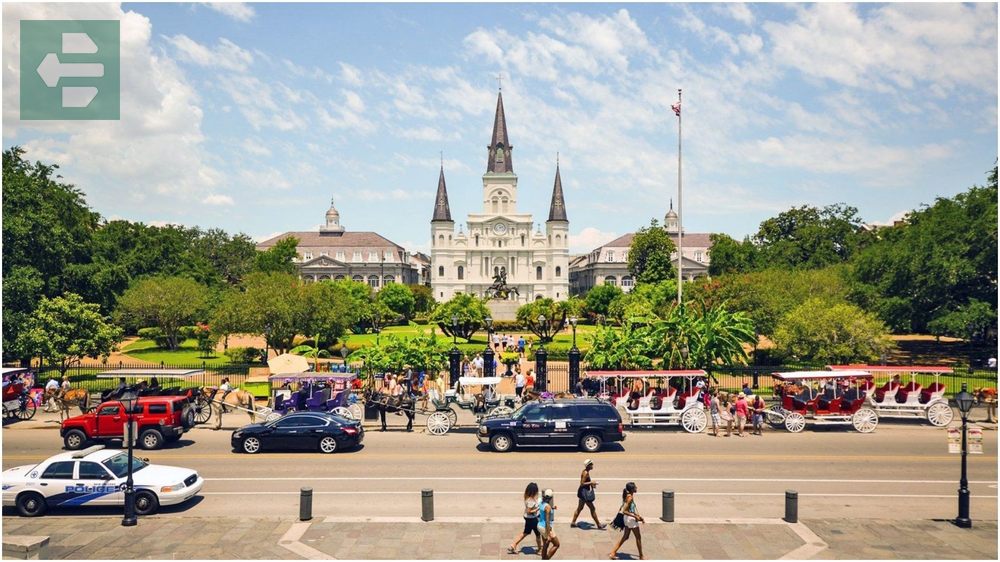
The square transforms hourly. Morning brings coffee vendors and dog walkers. Afternoon explodes with tourists and art sales. Evening settles into intimate jazz performances under antique gas lamps.
Locals avoid midday crowds but return for sunset when the cathedral's bells chime and the Mississippi River breeze carries music from nearby cafes. The square becomes magical in these golden hours.
Quick Facts:
- Peak season: Year-round
- Getting there: Heart of French Quarter
- Entry fee: Free
- Suggested time: 1-2 hours
- Key spots: Artist booths, cathedral steps, riverfront
5. St. Louis Cathedral: Spiritual Center of the Creole City
St. Louis Cathedral has overlooked Jackson Square since 1718, making it America's oldest continuously active Roman Catholic cathedral. The current structure, rebuilt in the 1850s, combines Gothic Revival architecture with distinctly New Orleans character.
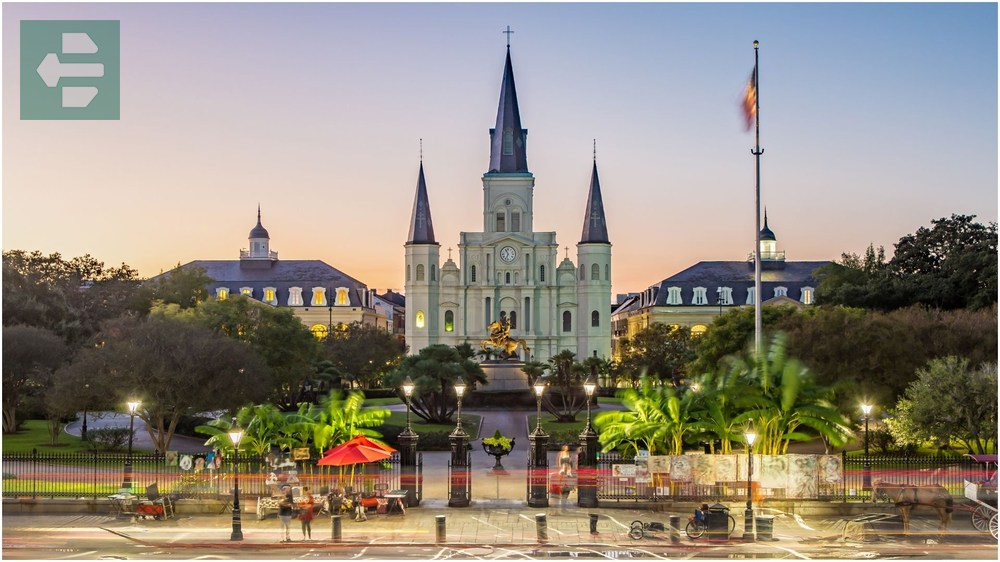
Free concerts fill the sanctuary most Friday afternoons—locals slip in during lunch breaks for these intimate performances. The acoustics, designed for Gregorian chant, transform simple piano melodies into transcendent experiences.
Three previous cathedrals occupied this spot. Each rebuilding after fire or hurricane reinforced the city's belief that some places are too sacred to abandon.
Quick Facts:
- Peak season: Year-round
- Getting there: Jackson Square, French Quarter
- Entry fee: Free entry, donation suggested
- Suggested time: 30-45 minutes
- Key spots: Main sanctuary, gift shop, Friday concerts
6. Magazine Street: Six Miles of Local Flavor
Magazine Street stretches six miles from the French Quarter to Audubon Park, creating New Orleans' premier shopping and dining corridor. Each neighborhood section offers distinct character—antiques in the Lower Garden District, boutiques in the Irish Channel.

Shop like a local by starting uptown near Audubon Park and working downtown. This direction follows the natural flow of foot traffic and positions you for lunch in the Garden District.
The street showcases working New Orleans—not tourist New Orleans. Family-owned shops share blocks with innovative restaurants, creating an authentic urban experience found nowhere else in the South.
Quick Facts:
- Peak season: October-April (walking weather)
- Getting there: Streetcar or bus routes
- Entry fee: Free to browse
- Suggested time: Half to full day
- Key spots: Lower Garden District, Irish Channel sections
7. Frenchmen Street: Where Locals Go for Music
Frenchmen Street delivers authentic New Orleans music without Bourbon Street's tourist circus. Three blocks of intimate venues showcase jazz, blues, funk, and brass bands in spaces where you can actually hear the music and conversation.

On any given night, Grammy winners might jam with street musicians who've never recorded an album. The magic happens in this democracy of talent where music matters more than fame.
Local musicians call this “the real Bourbon Street.” Arrive before 9 PM to claim a spot at the bar, then settle in for music that continues until sunrise.
Quick Facts:
- Peak season: Year-round, especially weekends
- Getting there: Walk from French Quarter
- Entry fee: Most venues $10-20 cover
- Suggested time: Full evening
- Key spots: The Spotted Cat, d.b.a., Snug Harbor
8. Audubon Aquarium: Underwater Journey Through America
The Audubon Aquarium houses 15,000 aquatic species in exhibits that recreate environments from the Mississippi River to the Caribbean Sea. The walk-through tunnel surrounded by sharks and rays creates an underwater experience unlike typical aquarium viewing.

The Gulf of Mexico exhibit showcases local marine life most visitors never see—from tiny seahorses to massive grouper. Interactive touch tanks let you handle stingrays and small sharks under expert supervision.
Built where the 1984 World's Fair celebrated New Orleans' maritime heritage, the aquarium continues that tradition of connecting visitors to the waters that shaped this port city.
Quick Facts:
- Peak season: Summer and holidays
- Getting there: Riverfront near French Quarter
- Entry fee: From $35 adults
- Suggested time: 2-3 hours
- Key spots: Shark tunnel, Gulf exhibit, IMAX theater
9. World War II Museum: America's Untold Stories
The National World War II Museum preserves the stories of the war that changed America forever. Interactive exhibits place visitors inside historical moments—from D-Day beaches to Pacific island battles.

The museum originated here because New Orleans built the Higgins boats that carried Allied troops onto enemy beaches. Local shipbuilders helped win the war, earning the city this national memorial.
Allow extra time for the 4-D theater experience and oral history stations where veterans share firsthand accounts. These personal stories transform historical facts into human experiences that resonate long after your visit ends.
Quick Facts:
- Peak season: Year-round, weekends busier
- Getting there: Warehouse District, streetcar accessible
- Entry fee: From $32 adults
- Suggested time: Full day
- Key spots: D-Day exhibit, Pacific theater, veteran interviews
10. Cafe du Monde: Coffee and Beignets Since 1862
Cafe du Monde has served coffee and beignets 24 hours a day since 1862, creating New Orleans' most enduring culinary tradition. The open-air pavilion faces the Mississippi River, where freight ships pass while you sip cafe au lait and dodge powdered sugar clouds.

Order like a local: coffee and beignets, nothing else. The menu hasn't changed because perfection needs no improvement. The chicory-laced coffee cuts through the sweet, pillowy beignets dusted with enough powdered sugar to coat your shirt.
I've watched sunrise here after long nights on Bourbon Street and started mornings here before French Quarter walks. Both experiences feel equally essential to understanding New Orleans' rhythm.
Quick Facts:
- Peak season: Year-round, 24/7 operation
- Getting there: French Market, riverfront
- Entry fee: Menu items $3-8
- Suggested time: 30-45 minutes
- Key spots: Outdoor seating, riverfront views
11. French Market: Five Blocks of Local Life
The French Market stretches five blocks along the Mississippi River, combining farmer's market traditions with artisan shops and food vendors. Native Americans traded here before European settlers arrived, making this possibly America's oldest public market.

The covered pavilions shelter everything from Louisiana hot sauce tastings to handmade jewelry. Weekend mornings bring locals shopping for produce and tourists hunting for authentic souvenirs in the same aisles.
Street musicians perform throughout the market, their music mixing with vendor calls and river breeze. This sensory blend captures New Orleans' essence—commerce, culture, and celebration flowing together like tributaries feeding the mighty Mississippi.
Quick Facts:
- Peak season: Weekends year-round
- Getting there: Riverfront, French Quarter
- Entry fee: Free browsing
- Suggested time: 1-2 hours
- Key spots: Farmer's market, artisan shops, food court
New Orleans rewards the curious traveler with experiences found nowhere else on Earth. These best places to go in New Orleans offer glimpses into a city that refuses to be ordinary—where music flows like water and every street corner tells a story worth hearing.
Pack light clothes for the humidity and comfortable shoes for the cobblestones. Bring an appetite for adventure and a willingness to let the city's rhythm guide your days.
Your New Orleans story starts the moment you step off the plane. The city has been waiting centuries to show you why it remains America's most magical destination.
